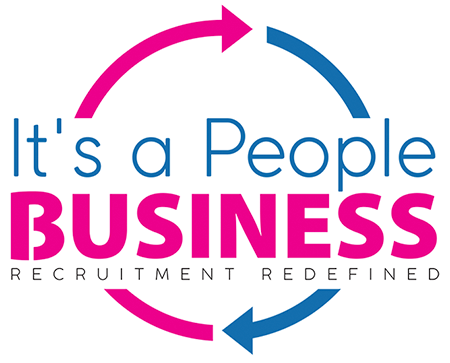How to Optimise Your Recruitment Process
How to Optimise Your Recruitment Process

In today's fast-paced business world, it's essential for companies to have a streamlined recruitment process that enables them to find the best candidates quickly and efficiently. One of the most effective ways to do this is through the use of data analytics and hiring metrics. These tools can help companies measure the effectiveness of their recruitment strategies, identify areas for improvement and make data-driven decisions. Data analytics allows companies to track and analyse data related to their recruitment process, such as the number of applications received, the source of the applications, the time it takes to fill a position, and the quality of the candidates. By analysing this data, companies can gain insights into what works and what doesn't, allowing them to optimise their recruitment process and make more informed hiring decisions.
Make targeted improvements
Make targeted improvements
Hiring metrics, on the other hand, are specific measurements that companies can use to track their progress and identify areas for improvement. Metrics such as time-to-hire, cost-per-hire, and candidate satisfaction can provide valuable insights into the efficiency and effectiveness of the recruitment process. By analysing these metrics, organisations can identify bottlenecks and inefficiencies in the process, allowing them to make targeted improvements. Furthermore, data analytics can be used to identify patterns in candidate behaviour, such as the channels they use to find job openings or the types of job listings they are most likely to respond to. Armed with this information, recruiters can tailor their approach to reach the most qualified candidates and increase the likelihood of making successful hires. In short, data analytics and hiring metrics can be powerful tools for optimising the recruitment process and improving the quality of hires, ultimately leading to better business outcomes.
1. Identify key hiring metrics.
1. Identify key hiring metrics.

Enhancing hiring practices through streamlined recruitment processes is a pivotal endeavour for any organisation. Central to this optimisation is the identification of key hiring metrics. Vital hiring metrics encompass factors such as time taken to fill a position, cost incurred per hire, and the calibre of hires acquired. Pinpointing these metrics is imperative as they grant HR professionals valuable insights into the efficacy of their recruitment strategies, enabling informed, data-driven enhancements. Additionally, these metrics serve to pinpoint areas necessitating refinement and furnish benchmarks for future hiring aspirations.
Get higher-quality hires, better retention rates, and improved overall business performance.
Ultimately, refining recruitment processes via adept data analytics has the potential to yield higher-calibre hires, bolster retention rates, and uplift overall business performance. By establishing these essential hiring metrics, organisations embark on a trajectory of strategic evolution, guided by insights and driven towards optimal talent acquisition outcomes.
Read More: Outsourcing vs. In-House Hiring: Which is Right for Your Business?
2. Use data analytics to track.
2. Use data analytics to track.

One of the most effective ways to streamline the recruitment process is to use data analytics to track key metrics. By collecting and analysing data on your hiring process, you can identify areas of inefficiency and make data-driven decisions to optimise your recruitment process. This can include tracking metrics like time-to-hire, cost-per-hire, and applicant-to-hire ratios. By monitoring these metrics, you can identify bottlenecks in the process and take steps to address them, such as streamlining the application process or improving communication with candidates.
Read More: Mastering the Main Stages of Any Recruitment Discussion: A Practical Guide for Employers
Additionally, data analytics can help you identify patterns in your hiring data, such as which sources are generating the most qualified candidates or which stages of the process are causing the most drop-offs. Armed with this information, you can make informed decisions to improve your recruitment process and ensure that you are attracting and hiring the best candidates.
3. Analyse candidate sourcing channels.
3. Analyse candidate sourcing channels.

Efficiently refining the recruitment process is imperative for companies to swiftly and effectively identify suitable candidates. An integral stride in this journey involves the scrutiny of candidate sourcing avenues. Companies must vigilantly monitor and assess the origins of their most promising candidates to discern the most efficacious channels. Employing data analytics and pertinent hiring metrics like conversion rates, time to hire, and cost per hire facilitate this analysis. By pinpointing the high-performing sourcing channels, companies can allocate enhanced resources and budget to these avenues, resulting in an elevated calibre of candidates and a more streamlined recruitment trajectory.
Stay informed about industry trends and adjust your strategies accordingly.
Furthermore, monitoring candidate sourcing channels equips companies with industry insights, enabling strategic adjustments to stay competitive in the job market. This approach not only empowers businesses to secure top talent promptly but also positions them to adapt proactively to evolving industry dynamics. In essence, the comprehensive evaluation of candidate sourcing channels constitutes a key strategic asset, fostering a dynamic recruitment landscape that aligns with corporate objectives and industry trends.
4. Evaluate candidate experience feedback.
4. Evaluate candidate experience feedback.

One of the key aspects of streamlining the recruitment process is evaluating candidate experience feedback. This involves collecting feedback from candidates at various stages of the recruitment process and analysing it to identify areas for improvement. Candidate feedback can be obtained through surveys, interviews, and focus groups. By analysing this feedback, recruiters can gain valuable insights into the candidate experience, including how easy or difficult it was to apply for the position, how well the job requirements were explained, and how responsive and helpful the recruitment team was throughout the process. This information can then be used to make improvements to the recruitment process, such as improving job postings, communication with candidates, or the overall candidate experience. This not only helps to improve the recruitment process but also ensures that candidates have a positive experience with the organisation, which can ultimately lead to better retention rates and a stronger employer brand.
5. Continuously optimise recruitment process.
5. Continuously optimise recruitment process.
Efficiently streamlining the recruitment process is paramount for enterprises aspiring to attract and retain premier talent. A pivotal aspect of this endeavour involves the ongoing optimisation of the recruitment journey. This entails consistent scrutiny and analysis of hiring metrics to unearth opportunities for enhancement. Metrics such as time-to-hire, cost-per-hire, and applicant-to-hire ratio serve as guiding indicators, offering insights into the efficacy of recruitment strategies.
Improve the quality of new hires, reduce turnover, and ultimately drive business success.
For instance, a consistently prolonged time-to-hire could signal operational sluggishness or bottlenecks warranting rectification. Through a continual process of recruitment optimisation, businesses can elevate the calibre of their hires, mitigate turnover, and ultimately propel organisational triumph. This proactive approach ensures that the recruitment process remains attuned to evolving demands, equipping businesses to curate a talent pool that harmonises with their objectives. By embracing this iterative optimisation cycle, enterprises forge a pathway to securing top talent, cultivating a cohesive work environment, and fuelling sustained growth.
Conclusion
Conclusion
Data analytics has revolutionised the recruitment process. By leveraging data, companies can optimise their recruiting process, reduce costs, and improve the quality of their hires. The key is to identify the right metrics and use the right tools and techniques to analyse the data. By doing so, companies can make informed decisions and achieve a competitive advantage in the job market. As the job market continues to evolve, it is essential that companies adapt to the changing landscape and embrace data analytics to improve their hiring process.
Read More: The Benefits of Working with a Flat Fee Recruiter
For adept advice and assistance on integrating these top-level tactics, get in touch with It's a People.Business. Our proficient recruitment experts are equipped to aid you in crafting an economical and streamlined recruitment approach that falls in-line with your organisational objectives. Take the initiative and reach out to us today to uncover more about how we can help you establish a capable and cohesive team for your burgeoning enterprise.
